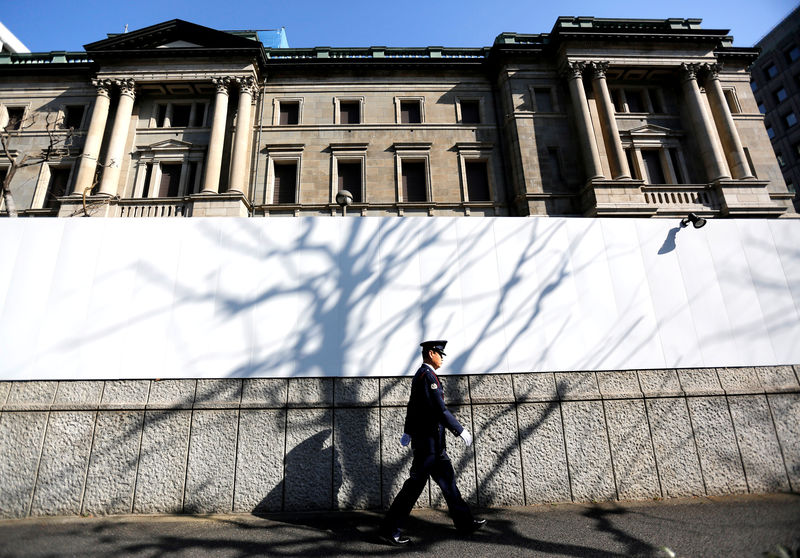By Leika Kihara
TOKYO (Reuters) - The Bank of Japan is expected to keep monetary policy steady on Thursday and predict that inflation will fall short of its 2 percent target for three more years, signaling that its massive stimulus will stay in place for the foreseeable future.
Given their dwindling policy tool-kit, BOJ officials have made clear that subdued inflation alone won't trigger additional easing, and that the central bank will act only if risks threaten to derail Japan's economic recovery.
But slowing global demand and simmering trade tensions have hurt Japan's exports and business sentiment, putting the test to the BOJ's projection the economy will keep expanding moderately.
With uncertainty over a scheduled sales tax hike in October also clouding the outlook, some analysts expect the BOJ to change its forward guidance in coming months to give markets more clarity on how long interest rates will remain very low.
"If the BOJ were to downgrade its inflation forecast, changing the forward guidance could be among options," said Izuru Kato, chief economist at Totan Research.
"But the BOJ likely won't do it this time," because markets already expect any rate hike to be some time away, he added.
At a two-day meeting ending on Thursday, the BOJ is expected to maintain its short-term rate target at minus 0.1 percent and a pledge to guide long-term yields around zero percent. It is also expected to reiterate it will keep buying assets such as government bonds and exchange-traded equity funds.
In quarterly projections also due on Thursday, the BOJ may slightly cut its growth and price forecasts for the current fiscal year ending in March 2020, sources have told Reuters. It will also project inflation to move above 1.5 percent but fall short of 2 percent in fiscal 2021, they said.
Such projections will underscore a dominant market view that heightening risks and soft inflation will keep major central banks from whittling down crisis-mode policies any time soon.
Under forward guidance adopted last year, the BOJ pledged to keep rates very low for an "extended period" given uncertainties such as the impact of this year's sales tax hike on the economy.
Some analysts say the BOJ could tweak the language to reassure markets that rates will stay ultra-low long after the tax increase takes place.
"The BOJ could extend its forward guidance and commit to maintaining current monetary easing at least through 2020," said Hiroshi Ugai, chief Japan economist at JPMorgan (NYSE:JPM) Securities.
Ugai said the BOJ could make the tweak on Thursday, though most analysts expect any such change to happen later this year.
Despite some government steps to soften the tax blow, analysts polled by Reuters expect it will briefly knock the economy into contraction in the fourth quarter.
Years of heavy money printing have failed to fire up inflation to the BOJ's 2 percent target and left it with little ammunition to fight the next recession.
Prolonged easing has also added to stresses on regional banks, already facing slumping profits due to an ageing population and an exodus of borrowers to big cities.
Under current projections, the BOJ expects core consumer inflation to hit 1.1 percent in the year ending in March 2020 and accelerate to 1.5 percent next year. That is much higher than projections in a Reuters poll of 0.7 percent inflation this fiscal year and 0.8 percent the following year.
